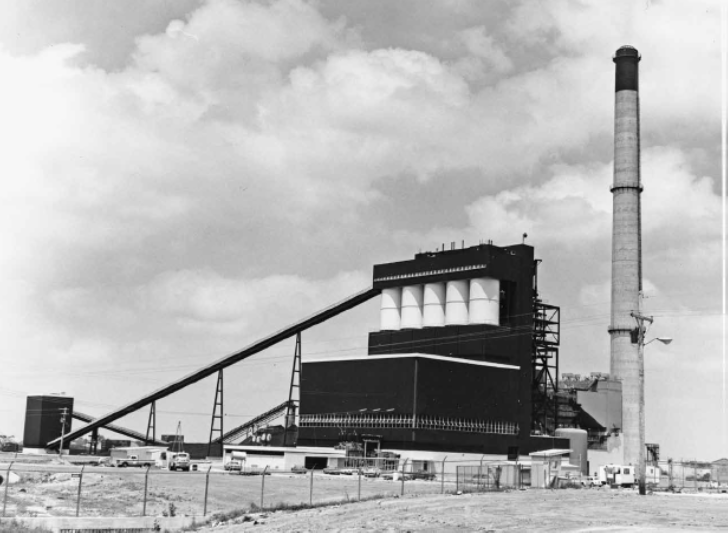- Located in Asbury, Missouri
- Online June 1, 1970
- Approximately 200 MW of coal-powered generation
- Removed from service March 1, 2020
Asbury Power Plant

Honoring the Past – Building for the Future
Commissioned June 1, 1970, the Asbury Power Plant served our customers well for many decades. As energy needs changed and energy sources evolved, the plant became less economical to dispatch into the energy market compared to other energy generation. Asbury also faced significant and expensive investments required by the Environmental Protection Agency to maintain compliance with evolving environmental rules. The plant was removed from service March 1, 2020.
AROC – a reNEWable chapter
Removal from service was not the end of the Asbury Power Plant facility. Asbury employees had the opportunity to transition to new roles within the company, and many of them took positions supporting our new wind farms. The facility also found new life as the Asbury Renewables Operations Center, affectionately called the AROC.
The substation at the facility serves as the interconnection point for our North Fork Ridge wind farm, one of three Liberty wind farms generating approximately 600-megawatts of clean, renewable energy. The office building, maintenance shop, and employee facility also remain in use at the site. Liberty continues to explore future opportunities for the site and for our employees to use their expertise of our existing infrastructure to support clean and reliable generation for our customers.

Safety First
Planning for the decommissioning of the Asbury Power Plant took many months. Black & Veatch of Overland Park, Kansas, provided engineering support to Liberty during the planning and execution of plant demolition. Liberty selected GSD Companies of Channelview, Texas, to perform the dismantling of the plant. GSD subcontracted the explosive felling of the largest of the plant structures to Controlled Demolition, Inc. of Phoenix, Maryland. On June 29, 2023, demolition experts successfully imploded two stacks - 400' and 465' - one air pollution control system building, and the plant at Asbury.
The Liberty team and its contractors took several steps to help ensure a safe demolition event and ongoing safety at the site. This includes:
- engaging all Authorities Having Jurisdiction (AHJs) to ensure all permitting and notifications were completed before the demolition;
- notifying all EMS and local response teams;
- acquiring all necessary building and zoning permits and city, county, state, and federal permits;
- minimizing on-site attendance during the demolition event;
- requiring Personal Protective Equipment (PPE) for all on-site employees and contractors during demolition;
- creating a blast zone around the plant and limiting access before, during, and after the demolition;
- using stacked CONEX boxes to protect structures not part of the demolition;
- weakening structures to be demolished by making strategic cuts in the structures prior to demolition;
- coordinating closely with local law enforcement, fire, emergency management, and others ahead of the event;
- closing roads near the plant prior to demolition and until the blast site was deemed secure; and
- installing security fencing around the blast site.
Protecting our Environment
- Liberty worked with all AHJs over the demolition and implosion activities to be fully compliant with all permitted activities.
- Asbury’s coal ash impoundment (a facility for storing coal ash) was closed in 2022 to prevent potential for water contamination.
- As required by Missouri Department of Natural Resources, all asbestos and other hazardous materials were removed from the facility prior to demolition.
- Air quality monitoring was conducted during asbestos removal, which was completed in February 2023.
- Mister fans used prior to and during the demolition helped to control dust. (The noise and vibration caused during the demolition is similar to a thunderstorm. Locations downwind and near the plant may experience some dusting in the minutes following the demolition.)
- Steel and other metals used to construct the Asbury Plant will be sent to mills for recycling.
Demolition by the Numbers
- One power plant
- One air pollution control system building
- Two stacks (original 400’ stack constructed of concrete and brick; 465’ stack constructed of concrete and steel)
- ~1,693 pieces of dynamite and other explosives
Return to home page Click Here
